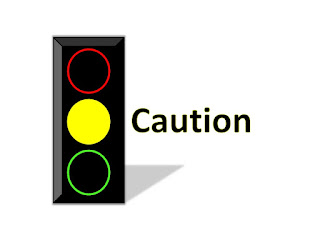Cyanos Activity May 12, 2021
Water is clean for recreation.
Disclaimer: The information presented below reflects conditions throughout the lake and may differ from conditions on specific shorelines. For information regarding beach closings please contact the Torrington Area Health District or local town officials.
On Wednesday, May 12th
, AER visited Bantam Lake to conduct biweekly Cyanobacteria
monitoring as part of the ongoing lake management program. Water column profile
data, total depth measurements, and Secchi transparency data were collected from the
North Bay Site (N 41.71087° W -73.21155°), the Center Lake Site (N 41.70056° W -
73.22102°), a site west of Folly Point (N 41.70773 W -73.22638), and at a site in the
South Bay region of the lake (N 41.69015 W -73.22728).
A plankton tow sample using a 10µm mesh plankton net was collected at the Center
Lake site. The concentrated plankton sample was transferred into a 25mL glass amber bottle and stored at 3°C. Approximately 1 liter of the top three meters of lake water
were integrated and collected for algae counts at both the North Bay and Center Lake
sites using a three-meter long sampling tube. These samples were preserved with
Lugol’s solution shortly after collection and stored at 3C. Methods for analyses of the
phytoplankton net sample and the integrated samples described in our April 30th
memo were followed.
A total of 27 algal genera were observed between the net tow and integrated whole
water samples. Eight of those were genera from the Chlorophyta (aka Green Algae).
Both the Cyanobacteria (aka Blue-green Algae) and Bacillariophyta (aka Diatoms)
were represented by six genera; and four genera of Chrysophyta (aka Golden Algae)
were identified. Other taxonomic group were represented by one genus.
The Golden Algae, continued to most abundant taxonomic group. The colonial Uroglenopsis spp. (Fig. 1a) was the most abundant from that taxon, comprising 61% and 54%
of all cells counted at the North Bay and Center Lake Site samples.
The Cyanobacteria were the next most abundant algal group, comprising 21% and 30%
of all cells counted at the North Bay and Center Lake sites, respectively. The filamentous Aphanizomenon spp. (Fig. 1b) and the colonial Woronichinia spp. (Fig. 1c) were the
most abundant. At the Center Lake Site, Aphanocapsa spp. (Fig. 1d) was also important.
Cyanobacteria cell concentration at the North Bay and Center Lake Sites were 1,333
and 1,715 cells/mL, respectively. Both concentrations were below the intervention
threshold of 20,000 cells/mL, and indicative of Visual Rank Category 1 (CT DPH & CTDEEP 2019). Additional information on the State’s guidance to municipal health departments on cyanobacteria is available at https://portal.ct.gov/DPH/EnvironmentalHealth/Environmental-Health-Section/Blue-Green-Algae-Blooms.
The water column at all four sites continued to be mixed, albeit warmer than that observed on April 24th. Temperatures at all depths were between 14.2 and 13.4°C (Table 1).
Oxygen concentrations at all depths of all four sites were high. At 1m of depth concentrations were measured between 10.5 and 9.9mg/L (Table 1). Concentrations near the
bottom were also high and between 10.1 and 9.7mg/L among the four sites.
Secchi disk transparencies were good at the North Bay, Center Lake, and Folly Point
sites with measurements between 2.79 and 2.90m.
Secchi disk transparency was
lower at the South Bay site at 2.45m. To assess if the difference was due to higher cell
Cyanobacteria concentrations at the South Bay Site, an Analysis of Variance (ANOVA)
with Tukey pairwise comparisons was performed with the relative phycocyanin data
measured at 0.5m, 1m and each meter to the bottom. Phycocyanin is a photosynthetic
pigment unique to Cyanobacteria. Based on that analysis, there was no significant differences in relative phycocyanin concentrations in the water column of the four sites
(p>0.05). We hypothesize the difference in Secchi transparency at South Bay was due
to the site’s relatively shallow depth (Table 1), and mixing of the entire water column
which suspended materials from the bottom.
Literature Cited
Connecticut Department of Public Health and Connecticut Department of Energy and
Environmental Protection. 2019. Guidance to Local Health Departments for Blue–Green
Algae Blooms in Recreational Freshwaters. See https://portal.ct.gov/-/media/Departments-and-Agencies/DPH/dph/environmental_health/BEACH/Blue-Green-AlgaeBlooms_June2019_FINAL.pdf?la=en




